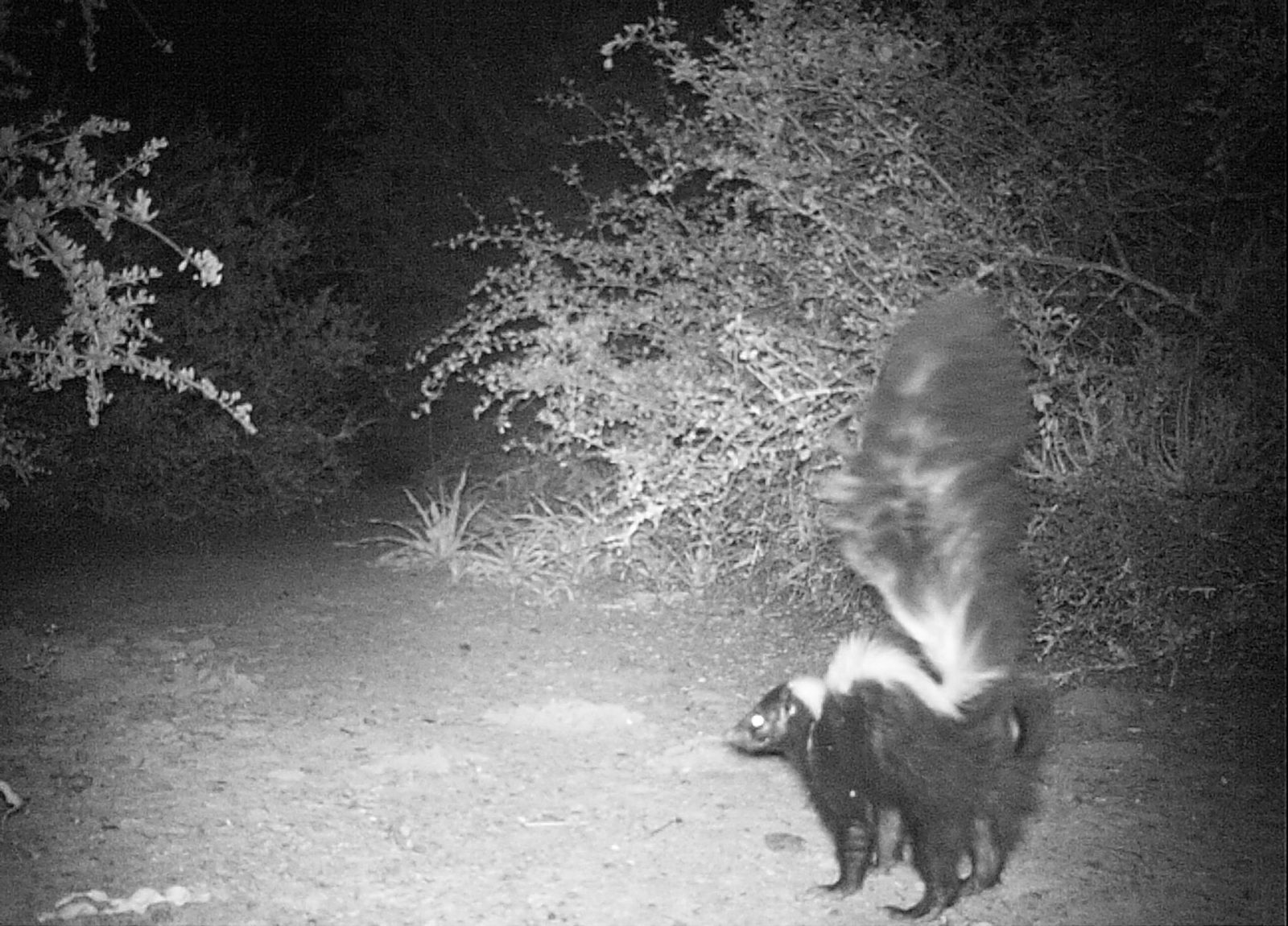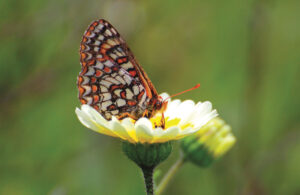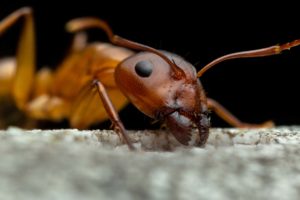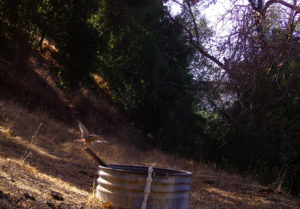
Everyone knows that smell. It strikes when you’re relaxing at home, your dog in the yard, or when you’re driving on the freeway, headed to work. It’s that smell, sharp and unpleasant, that makes your eyes water and sends you scrambling for a recipe to scrub it from a beloved pet’s fur. Smelled more than seen, the culprit is the skunk, a common California resident.
As year round residents, the skunks always seem to leave a lingering odor in the air. But just what is that odor exactly? Childhood cartoons depict it as a green puff emanating from somewhere near the animal’s backside, but nothing is ever so neat as it’s depicted in the media.
When startled, the skunk releases the odor from two glands that reside on either side of the anus. Out comes the fine mist, composed of thiols, chemicals that contain sulfur (yes, the same chemical that lets off that delightful rotten egg smell.) Skunks don’t aggressively seek out targets for spraying. They hold only about 15cc of the liquid within their bodies. Afterwards, it can take them at least a week to create more, during which time they’re missing their primary mode of defense.
Defending itself is just what the skunk in this camera trap photo, taken in May at 3:30 a.m., is doing. The trap was set up by Jeffrey Schwegman in Jasper Ridge Biological Preserve in the Santa Cruz mountains. It was a promising area, filled with scat from numerous species. Schwegman is focusing on using camera traps to provide environmental education. After letting students see the photos, they then visit the sights in person, conceptualizing nature in its place.
Something about this camera’s location may have disturbed the skunk. Other traps throughout the area captured fairly mundane images of animals passing through — nice to have, but nothing truly surprising. This one, however, provided something different. The skunk looks like it’s threatening to spray something or someone, tail raised in a defensive posture, body ready to release that familiar odor. While Schwegman thinks that there could have been another animal just out of the shot, he thinks something about the camera positioning was what set off the skunk.
It’s worth remembering — even, maybe, while bathing your recently sprayed pet — that skunks are a beneficial friend to have in your yard. They like to feast on grubs and other insects that eat plants, like little invisible garden guardians. Given their largely nocturnal nature, perhaps it’s time we make a little more space in our lives for the skunk.




